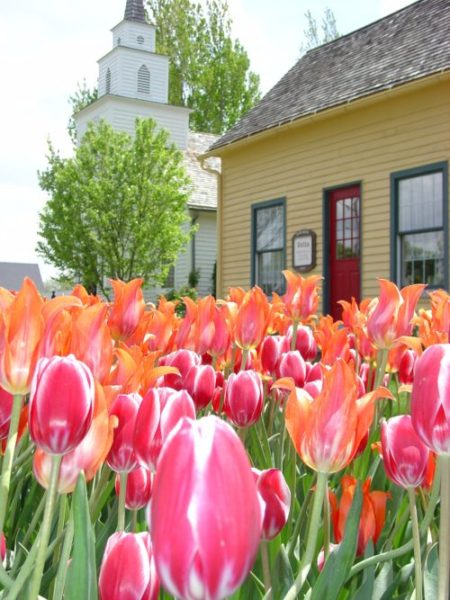
The Scholte Church, a replica of Dominie Scholte’s first church in Pella. Photo courtesy of Pella Historical Society and Museums
By Ashley Rullestad
Pella, an idyllic town in Marion County that is home to about 10,000 people, has a rich history of Dutch culture, starting with its settlement in 1847 by 800 Dutch immigrants led by the Rev. Dominie Hendrik “Henry” P. Scholte. They named the town in honor of Pella, a city which was a refuge for Christians who were fleeing Jerusalem in 66 A.D., because the Dutch settlers were also seeking religious freedom.
According to the Pella Historical Society, at the time in Holland, the government denied the right of the dissenters to assemble in groups of more than 19 people. Scholte’s trial was made a test case of the day. Scholte was found guilty and imprisoned for three weeks. Over the next 10 years, the dissenters worshipped when and where they could. Denied admittance to existing churches, they held church services in their homes and barns, or under hay sheds and open skies.
Their disillusionment grew and they began to search for a new land to settle. They considered Texas and Missouri, but they rejected them because they were slave states. Though Scholte’s wife Maria did not want to go to the United States, even she began to realize that their way of life was untenable in the Netherlands.
Late in April 1847, they set sail for the U.S. Four ships made the journey, including three from Rotterdam and one from Amsterdam. On Aug. 26, 1847, the settlers came to a place where a hickory pole with a shingle nailed to the top of it stood and on the shingle was written one word — Pella. Though it was just wild prairie, Scholte promised the group that they would build a beautiful town there.
TO READ THE ENTIRE STORY AND OTHER FASCINATING STORIES ABOUT IOWA HISTORY, subscribe to Iowa History Journal. You can also purchase back issues at the store.
